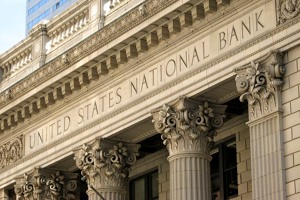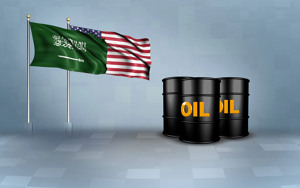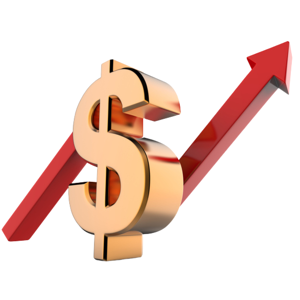Tavex uses cookies to ensure website functionality and improve your user experience. Collecting data from cookies helps us provide the best experience for you, keeps your account secure and allows us to personalise advert content. You can find out more in our cookie policy.
Please select what cookies you allow us to use
Cookies are small files of letters and digits downloaded and saved on your computer or another device (for instance, a mobile phone, a tablet) and saved in your browser while you visit a website. They can be used to track the pages you visit on the website, save the information you enter or remember your preferences such as language settings as long as you’re browsing the website.
| Cookie name | Cookie description | Cookie duration |
|---|---|---|
| tavex_cookie_consent | Stores cookie consent options selected | 60 weeks |
| tavex_customer | Tavex customer ID | 30 days |
| wp-wpml_current_language | Stores selected language | 1 day |
| AWSALB | AWS ALB sticky session cookie | 6 days |
| AWSALBCORS | AWS ALB sticky session cookie | 6 days |
| NO_CACHE | Used to disable page caching | 1 day |
| PHPSESSID | Identifier for PHP session | Session |
| latest_news | Helps to keep notifications relevant by storing the latest news shown | 29 days |
| latest_news_flash | Helps to keep notifications relevant by storing the latest news shown | 29 days |
| tavex_recently_viewed_products | List of recently viewed products | 1 day |
| tavex_compare_amount | Number of items in product comparison view | 1 day |
| Cookie name | Cookie description | Cookie duration |
|---|---|---|
| chart-widget-tab-*-*-* | Remembers last chart options (i.e currency, time period, etc) | 29 days |
| archive_layout | Stores selected product layout on category pages | 1 day |
| Cookie name | Cookie description | Cookie duration |
|---|---|---|
| cartstack.com-* | Used for tracking abandoned shopping carts | 1 year |
| _omappvp | Used by OptinMonster for determining new vs. returning visitors. Expires in 11 years | 11 years |
| _omappvs | Used by OptinMonster for determining when a new visitor becomes a returning visitor | Session |
| om* | Used by OptinMonster to track interactions with campaigns | Persistent |
| Cookie name | Cookie description | Cookie duration |
|---|---|---|
| _ga | Used to distinguish users | 2 years |
| _gid | Used to distinguish users | 24 hours |
| _ga_* | Used to persist session state | 2 years |
| _gac_* | Contains campaign related information | 90 days |
| _gat_gtag_* | Used to throttle request rate | 1 minute |
| _fbc | Facebook advertisement cookie | 2 years |
| _fbp | Facebook cookie for distinguishing unique users | 2 years |
Gold has Become the 'Ultimate Safe Haven Asset'

In the current macroeconomic environment, “gold is the ultimate safe-haven asset,” said Michael Widmer, commodity markets analyst at Bank of America, one of the top four US banks. According to the analyst, the main reason for this is the concern about the state of US finances.
The price of gold has risen rapidly this year, reaching a new record high of $2,787 an ounce on 22nd October. Since then, the price of gold has come down slightly and is trading at $2,666.
The Bank of America predicts that gold will reach $3,000 an ounce in the first half of 2025.
“The combination of macroeconomic uncertainty, debt growth, and gold purchases by central banks make gold the safe haven asset of last resort,”
Widmer said
The State of the US Budget and National Debt

One of the main factors why Bank of America considers gold to be the “ultimate” safe haven asset is the state of the United States budget and national debt.
Higher interest rates have significantly increased the cost of servicing debt, raising concerns about financial sustainability in the long term in the financial market.
According to the US government’s own forecasts, the amount of national debt relative to the economy will reach new records within the next three years
Widmer pointed out that neither presidential candidate made fixing the budget a focus of the election. In early October, the independent Committee for Responsible Federal Budget published a report assessing the impact of both Harris and Trump on the US national debt. According to the average estimate, Trump would increase the national debt by an additional $7.5 trillion between 2026 and 2035.
“The large and growing national debt threatens to slow economic growth, raise interest rates and interest payments, weaken security and limit the implementation of various policies. Finally, there is a growing risk that all this will lead to a budget crisis,” Widmer explained.
Gold is Also Supported by Global Trends

Widmer said expansionary fiscal policies are pervasive in advanced economies, which also supports gold. The International Monetary Fund (IMF) estimates that the increase in climate, demographic changes and defense costs will account for 7-8 percent of world GDP by 2030.
As spending on these issues increases, governments are forced to take on more debt. And when volatility in bond markets increases, gold offers a safe haven for investors, Widmer explained.
It is also expected that central banks will continue to actively buy gold
The share of gold in the reserves of central banks has increased to 10 percent, ten years ago this figure was only 3 percent.
Inflation Expectations are Rising

Gold rose to a record high in late October despite US Treasury yields rising since mid-September and reaching their highest level since July of this year. US Treasuries compete with gold for the title of main safe haven. And if the yield on government bonds goes up, it generally has a negative effect on gold.
According to Widmer, gold has become more expensive because inflation expectations have increased along with the Federal Reserve’s interest rate cuts. Since higher inflation is expected in the following years, the expected real return on bonds (return from which inflation has been deducted) has also decreased. In other words, investors think that the future real yield on bonds will be poorer.
Key Takeaways
- Gold’s status as the ultimate safe-haven asset is reinforced by the current economic landscape, characterised by mounting debt, fiscal pressures, and uncertain financial policies.
- With the U.S. grappling with a soaring national debt, rising interest rates, and constrained fiscal flexibility, investors are increasingly seeking gold as a hedge against financial instability.
- Global factors, including rising expenditures on climate, defense, and demographics, alongside growing central bank gold reserves, further bolster demand.
- As inflation expectations continue to climb, gold remains resilient, appealing to investors as a stable store of value amid volatility.
- As a result, the Bank of America’s prediction that gold could reach $3,000 an ounce by 2025 reflects both market confidence in its enduring value and the deep-rooted demand for security in uncertain times.

















